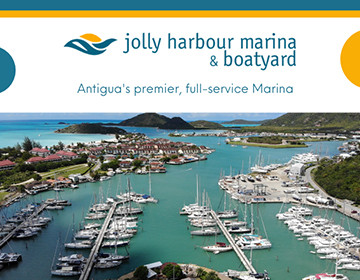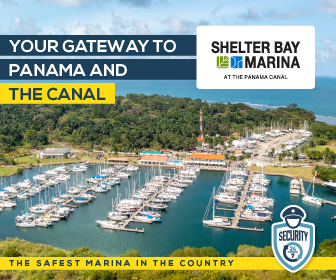Heading to the Caribbean this Fall? Find out about Sargassum…..
Part of a natural response to changing ocean conditions, the Pelagic Sargassum has bloomed in vast amounts over the past several years. While it offers a valuable offshore benefit to sealife, near shore the impacts are terrible. Coming in patches or floods of acres of matted weed, beaches can be covered with feet of smelly rotting weeds in a matter of a day, not to mention the problems encountered by cruising yachts when they find themselves faced with miles of weed to get around.
Published 6 years ago, updated 5 months ago
Extracts of a report by Joan Conover for Caribbean Compass –
http://www.caribbeancompass.com/
Since Winter 2017/8, Pelagic Sargassum weed has been impacting shorelines and offshore waters of the Caribbean and Gulf of Mexico. The influx has been felt from South America coastal areas, Eastern Caribbean, Western Caribbean and the Gulf of Mexico. Coming in patches or floods of acres of matted weed, beaches can be covered with feet of smelly rotting weeds in a matter of a day. Most government and concerned citizens have limited assets to control this mess, and in some cases, there are threats to air and water quality, plus beach environments are damaged. Sealife, in embayed areas, are adversely impacted; turtles either cannot reach the beaches to lay eggs, hatchlings get entrapped on beaches in the piles of weed, or poorly thought out clean-up efforts destroy the beach and nest sites.
Over the past months, articles in Caribbean Compass (www.caribbeancompass.com) have detailed the newest research efforts to assist with this influx of algae. An online satellite imagery system, from the work of the University of South Florida’s Dr C Hu, is a way to see where the Sargassum is and how and where it is moving – a kind of ‘early warning system.’
See article October 2017: https://www.noonsite.com/General/Environment/tracking-sargassum-seaweed-invasions-via-satellite
Sargassum Outlook Bulletin July 2018 by USF (https://optics.marine.usf.edu/projects/SaWS/pdf/Sargassum_outlook_2018_bulletin7_USF.pdf)
The “go-to” Sargassum Team of Experts
Some of the leaders in these efforts are Senior Scientist/Researchers Jim Franks and Oceanographer Don Johnson (University of Southern Mississippi), Dr C Hu (University of South Florida) and Emma Doyle (Vice-Chair., Gulf and Caribbean Fisheries Institute). Says Jim of the organization he chaired for over four years, “Emma is a supreme marine ecologist who oversees several Marine Protected Area Programs on Caribbean islands. She and I (along with our oceanography colleague Don Johnson) have been involved in the Sargassum issue since 2011.” They are the “go-to” people for information on ways to deal with this growing problem in the tropics.
Cruisers as Citizen Scientists
For over four years, through a Clean Wake program effort by the Seven Seas Cruising Association (SSCA), cruisers and citizens have been providing inputs and samples to at least two major university efforts such as the University of Mississippi’s Gulf Coast Research Laboratory (GCRL) and the University of South Florida. During the 2018 season, sailing vessels volunteered and collected samples which are being analyzed by both oceanographers as well as biologists and other researchers to gain critical knowledge of the transport mechanisms, flow, and reproduction methods of this plant. Air testing has also been added to this effort, with results to be provided to the researchers. Information about this variety of Sargassum has been very difficult to obtain in the past; the Pelagic Sargassum propagation less well understood than its stationary cousins. This is changing, as results of samples are processed and data points added to the body of knowledge.
See https://www.noonsite.com/General/Environment/reporting-site-pelagic-sargassum-in-the-caribbean
Sargassum Impact in the Southern Caribbean
Sadly the impacts in the southern Caribbean, which is on the first line of this season’s influx, are extreme. In the tropics, commercial developments are having so much damage to air quality and beaches that developers, and in some cases governments, are looking at extreme methods such as booming harbours to eliminate the weed inflows.
Jim Franks, the Senior Researcher at the Gulf Coast Research Laboratory, has major research focus on this area and is a resource on ways to handle these issues. As a member and former Chairman of the Gulf and Caribbean Fisheries Institute (GCFI), he shares the latest advances in science and management experience in relation to this emerging issue, noting that many ways to control weed infestation have been tried, with some limited success.
Clearly, the best and safest way to clear beaches is to be proactive and daily remove the accumulation without the use of heavy equipment. A combination of the collection in small vessels and beach cleaning has been proposed in Guadeloupe, which is one of the islands leading the efforts to protect harbours and beaches. Booming has been tried with limited success and some failures.
Jim Franks mentions the experiences of some efforts, “Booms might work in some instances…but will likely move the Sargassum ‘on down the line’ to another location. Also, if stuck (boomed) in one place for long, the Sargassum will likely sink…covering the bottom (not good if near a shallow reef). Booms have been tried in recent years…not sure of results of most, but the boom system deployed at a Barbados Hotel complex failed (just couldn’t contain the Sargassum). There is no easy fix.”
Additionally, impacts to sea life due to this influx and ways to handle the delicate turtle hatchlings are of great concern to all islands and communities throughout the Caribbean.
Can Sargassum be used by Island Communities?
Other groups are looking at what can be done to make value out of what up to now is a financial hardship. Because other variants of Sargassum are farmed for their high-value uses, research has been done on ways to utilize pelagic Sargassum as well; at least the algae is being looked at for what it can and cannot be used for.
Dr John Milledge of the University of Greenwich at Medway, UK, along with Patricia J. Harvey is concerned with ways to make a product out of these algae. Their article is at http://www.mdpi.com/2077-1312/4/3/60, a free online publication. The title says it all, “Golden Tides: Problem or Golden Opportunity? The Valorisation of Sargassum from Beach Inundations”.
Looking to the Future
Pelagic Sargassum has increased substantially in its amount and area of influence in the Caribbean and Tropics over the last 7 years, with some limited success in control of the impacts in some islands. Part of a natural response to changing ocean conditions, the Pelagic Sargassum has bloomed in vast amounts over the past several years. While it offers a valuable offshore benefit to sea life, nearshore the impacts are terrible. Efforts to research and identify ways to manage the disaster the weed can cause on beaches are ongoing. There are many collaborative efforts to share approaches on how to handle the weed, warn of incoming inflows and learn more of ways on how to control growth.
Articles in public accessible publications, the teamwork of GCRL/GLFI and America’s universities such as the University of Southern Mississippi/ the University of South Florida, plus a possible international collaboration with others, for example, University of Greenwich, all these efforts are identifying approaches as rapidly as they can.
The problem is known, efforts to help are ongoing, but it will take smart utilization of assets and determined ongoing environmentally protective efforts to help protect both our beaches/harbours and our wildlife.
Satellite-based Sargassum Watch System (SaWS)
http://optics.marine.usf.edu/projects/saws.html,
The Sargassum Watch System (SaWS) is designed to use satellite data and numerical models to detect and track pelagic Sargassum in near-real time. Find out more about the spread of this seaweed throughout the Atlantic, Caribbean Sea and the Gulf of Mexico and how it might affect your cruising choices.
Recent Sargassum News on the Web
July 18, 2018: BVI News – Early Warning System for Sargassum
August 6, 2018: BBC News – Sargassum: The Seaweed deluge hitting Caribbean shores
Related content
Atlantic Sargasso Weed: On-going Research Update
Sargasso Weed Infestation Research – Citizen Science for Transatlantic Sailors
Caribbean: Tracking Sargassum Seaweed ‘Invasions’ via Satellite
Related to following destinations: Anguilla, Antigua & Barbuda, Aruba, Bahamas, Barbados, Bermuda, British Virgin Islands, Cayman Islands, Cuba, Dominica, Dominican Republic, Grenada, Guadeloupe, Haiti, Jamaica, Martinique, Mexico, Montserrat, Puerto Rico, Saba, Sint Maarten, St. Barts, St. Kitts & Nevis, St. Lucia, St. Martin, St. Vincent & the Grenadines, Statia, Trinidad & Tobago, Turks & Caicos, US Virgin Islands
Related to the following Cruising Resources: Atlantic Crossing, Caribbean Sea, Cruising Impact, Environment, Routing








